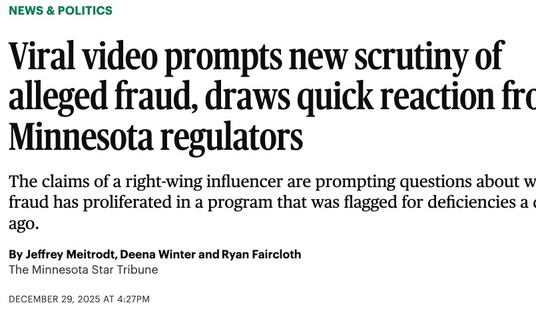That’s what Dana Milbank argues in his column today. In his estimation, the GOP wants younger people to bail out of the ObamaCare system to encourage a “death spiral” for insurers by jacking up premiums and forcing the ACA to collapse under its own weight. But Milbank has a serious chicken-egg misperception at the heart of his argument:
The Republicans’ scary-movie strategy has some logic to it: If they can frighten young and healthy people from joining the health-care exchanges, the exchanges will become expensive and unmanageable. This is sabotage, plain and simple — much like the refusal by red-state governors to participate in setting up the exchanges in the first place. But those sabotaging the new law should be careful what they wish for: Instead of killing the law, they are likely to make it more expensive to taxpayers. Their efforts could have the effect of turning Obamacare, which relies on private insurance and the free market, into just the sort of big-government entitlement Republicans were worried about in the first place.
If they succeed in scaring people away, the ones who join exchanges are likely to be older and sicker, making the insurance pool costlier to insurers. As Larry Levitt, a senior vice president of the Kaiser Family Foundation, explained to me, if costs are more than 3 percent higher than anticipated in the first few years of Obamacare, the federal government will have to pick up at least half of the additional expense.
If the health-care exchanges continued to attract only the elderly and the sick in future years, premiums would rise and the only people likely to remain in the program will be those who qualify for the federal subsidies, which would increase sharply because individual contributions are limited to a percentage of the recipient’s income.
“The more successful opponents are at discouraging young and healthy people from enrolling, the bigger share of the cost the federal government will end up covering,” Levitt said. “The implication of encouraging young and healthy people to sit on the sidelines is that costs are shifted to the federal government.”
This is nonsense on stilts, because it assumes that prices remained stable for these consumers in the first place. In fact, prices have already skyrocketed, and for younger consumers in particular. HHS tried to claim that rates went up “less than expected,” but did so only by comparing the new rates released in September to projections for 2016, not 2014. Avik Roy at Forbes and the Manhattan Institute showed that rates actually went up from 52% to 99% over the previous year, and quadrupled in some states. That’s before the first person signed up for these plans, healthy and young or sick and old.
Furthermore, the plans themselves changed in a way that didn’t fit the needs of those younger consumers. Those younger consumers, who are on average a lot healthier and less affluent, chose plans that made some rational sense for their economic and health situations — coverage that focused on hospitalization and covered only those issues that they had reason to predict might concern them. Now, ObamaCare forces them into comprehensive plans that make little sense for their potential use of health-care services.
Thanks to the costs of the mandates, insurance companies have had to raise deductibles just to keep premiums within range of these younger, healthier consumers, too. Instead of a cheap, affordable plan that allowed young Americans to pay retail costs for occasional clinic visits but gave them solid coverage for rare catastrophic events, they now have to spend thousands of dollars a year for coverage that doesn’t kick in at all until after they spend an additional $4,000 out of pocket first.
And this is the calculation that anyone can make. If you have to spend $4,000 on insurance and then another $4,000 on deductibles before seeing the first benefit from the insurance plan, why buy it at all? Why not just pay retail on clinic visits? Most young people will see a doctor once or twice a year, which might cost them $500 or so rather than the $8,000 they’re facing in this newly mandated apparatus. (Even if they do get subsidies for the premiums, they don’t get subsidies on the higher deductibles they now face.) Thanks to the ACA, they can buy insurance later if they do get really sick, and in the meantime will only have to pay a fine of around $500 bucks or so to avoid the mandate.
That’s not a “scary movie” snow job. That’s a rational calculation of risk and cost. Milbank dances all around this point, but he never once provides a rational reason for younger, healthier people to pay into this system by the thousands of dollars when most of them won’t get a single dollar in benefits from it.








Join the conversation as a VIP Member